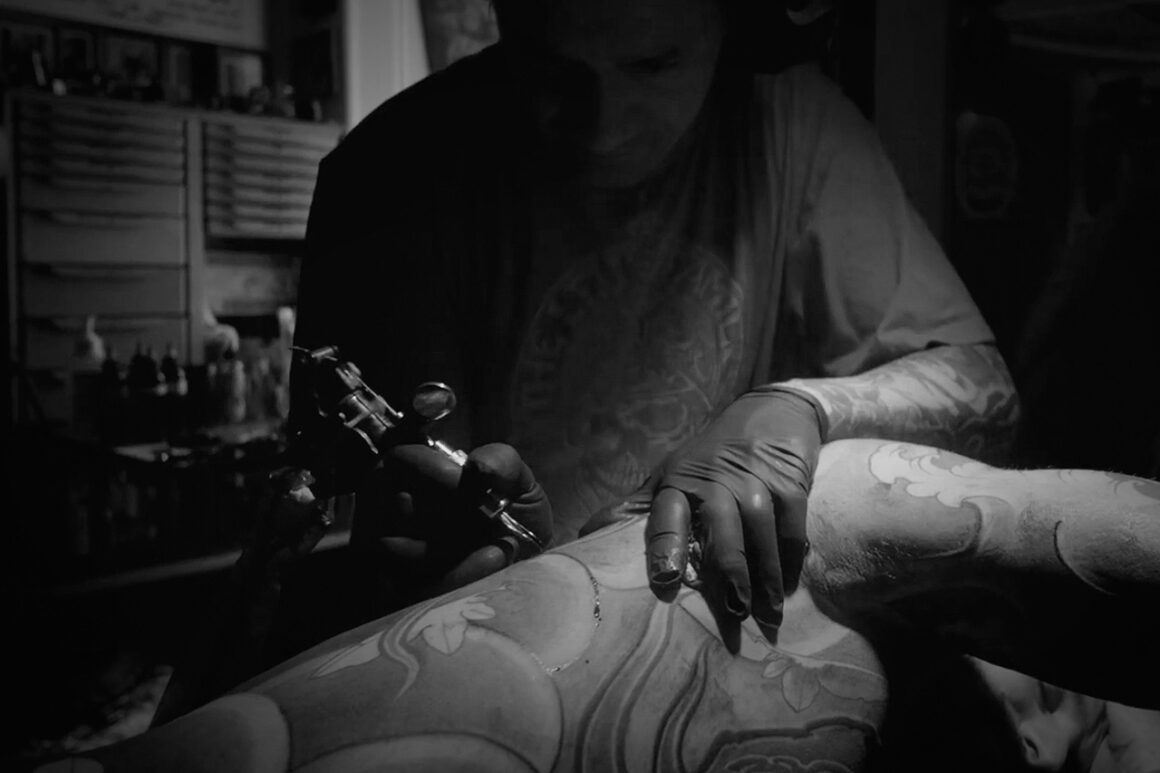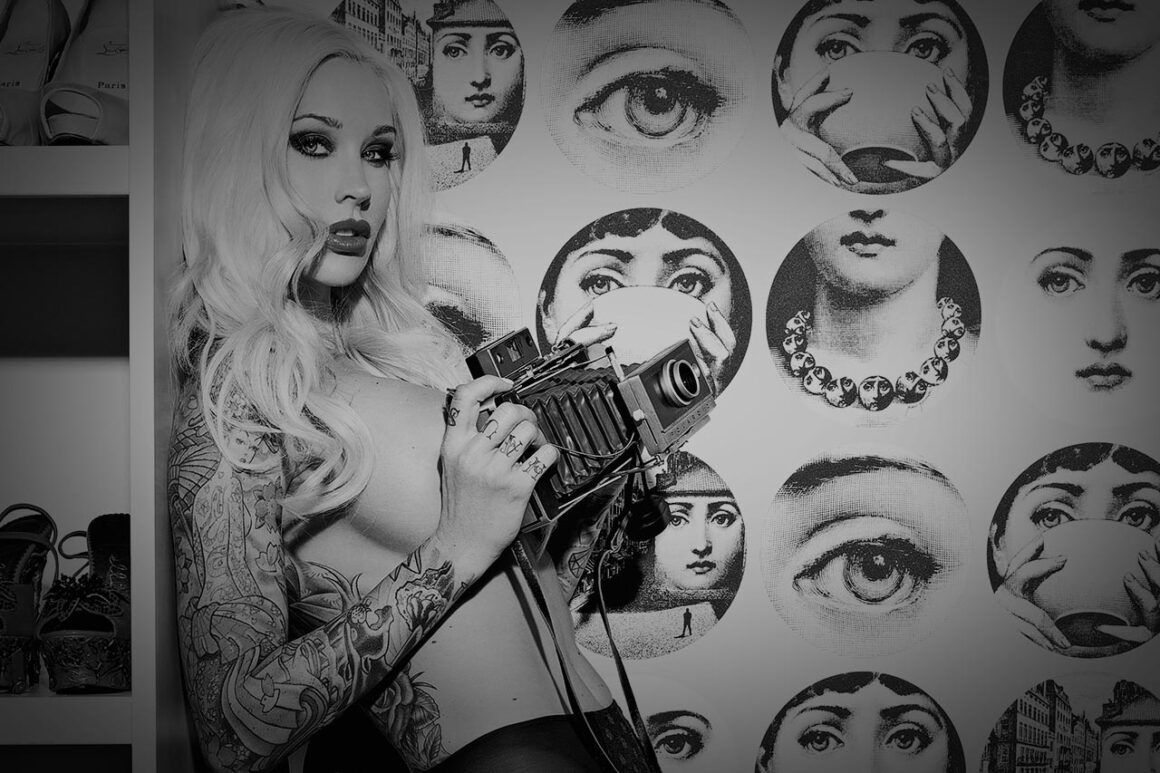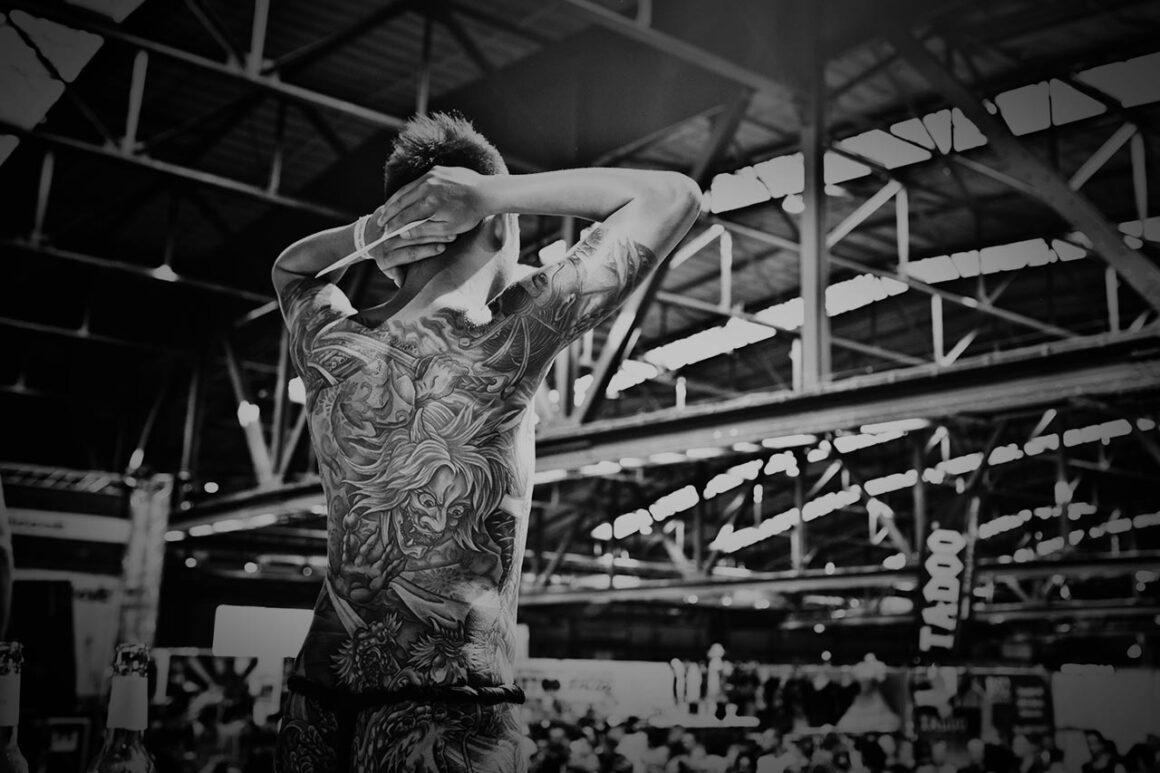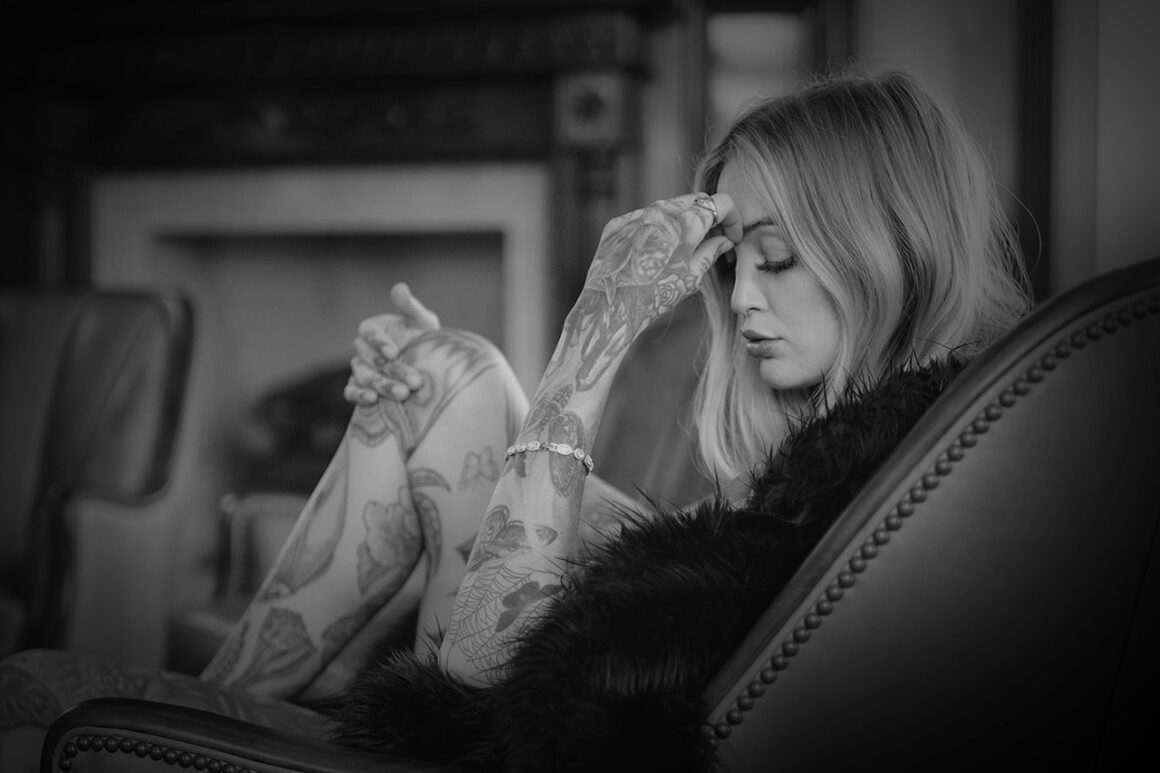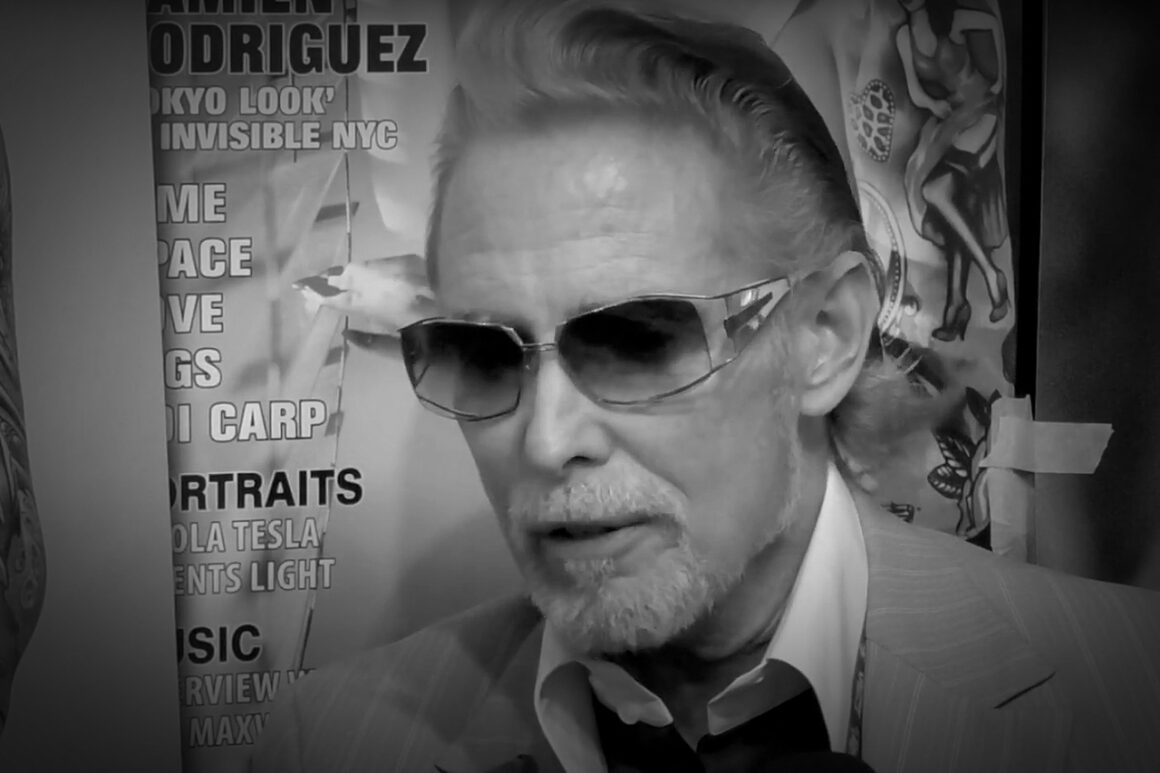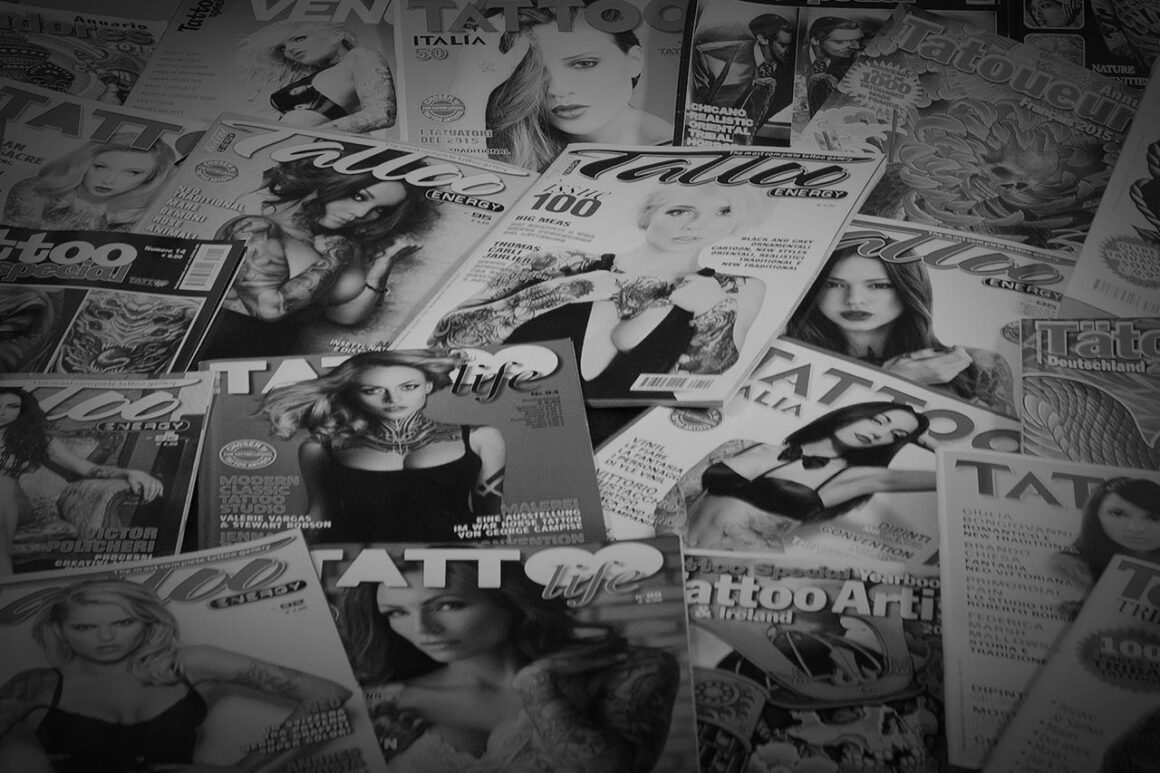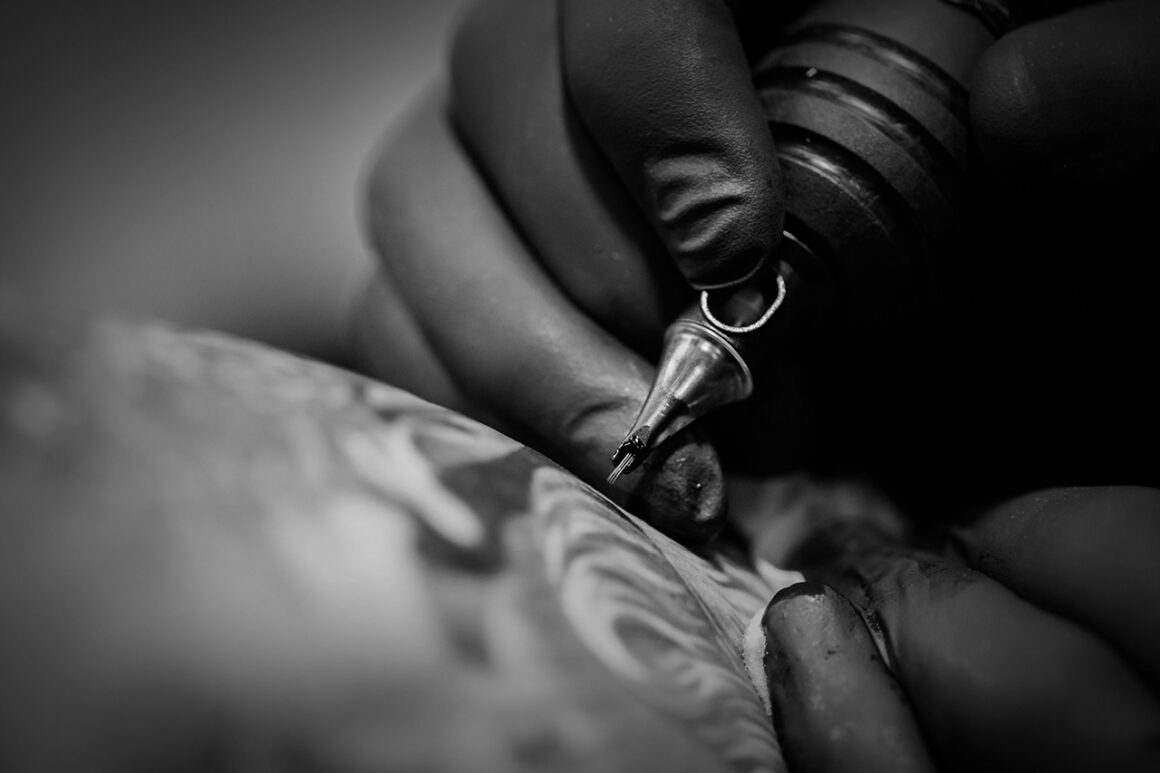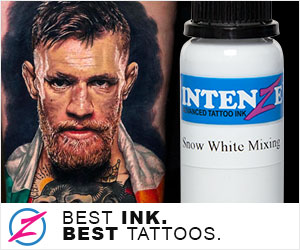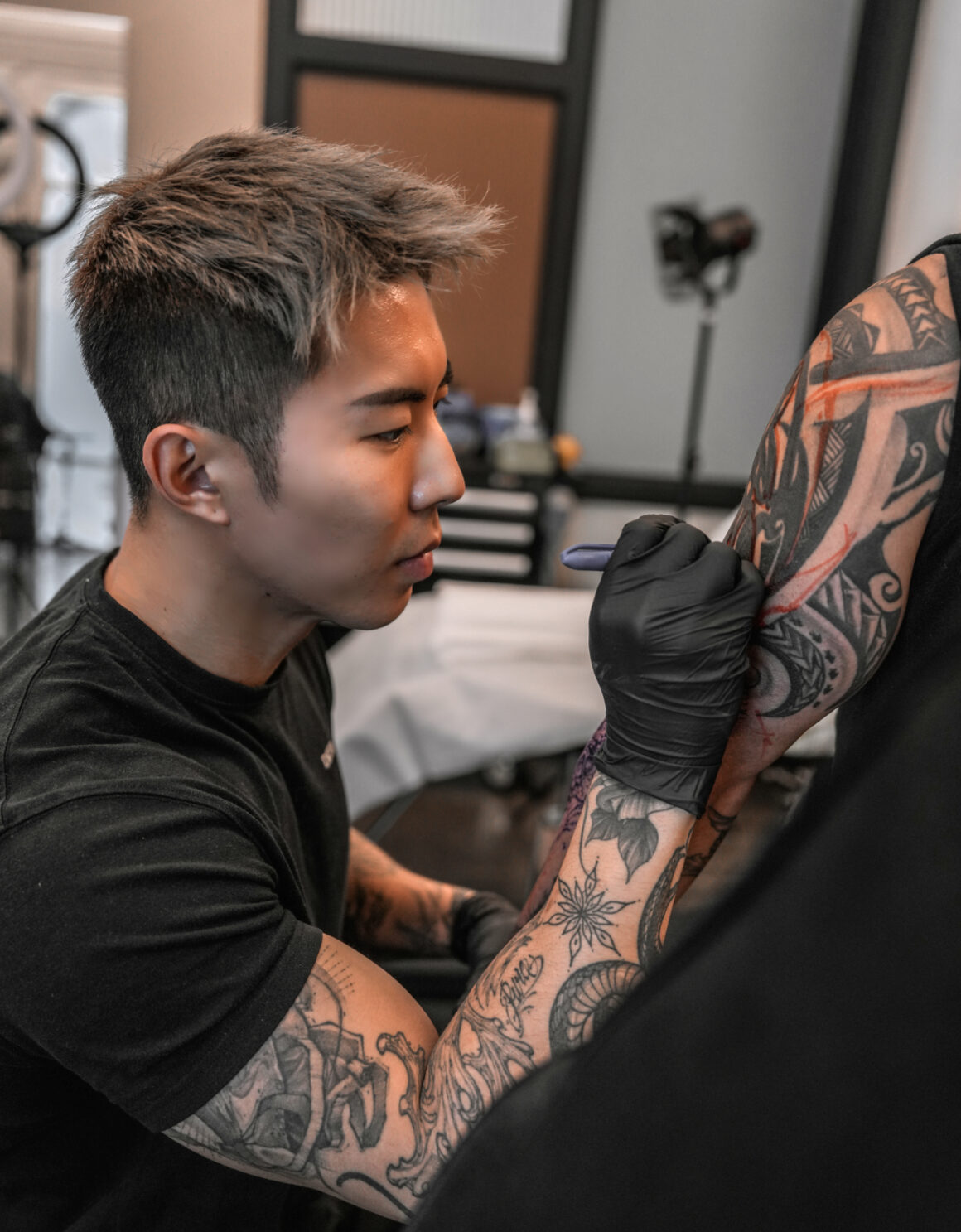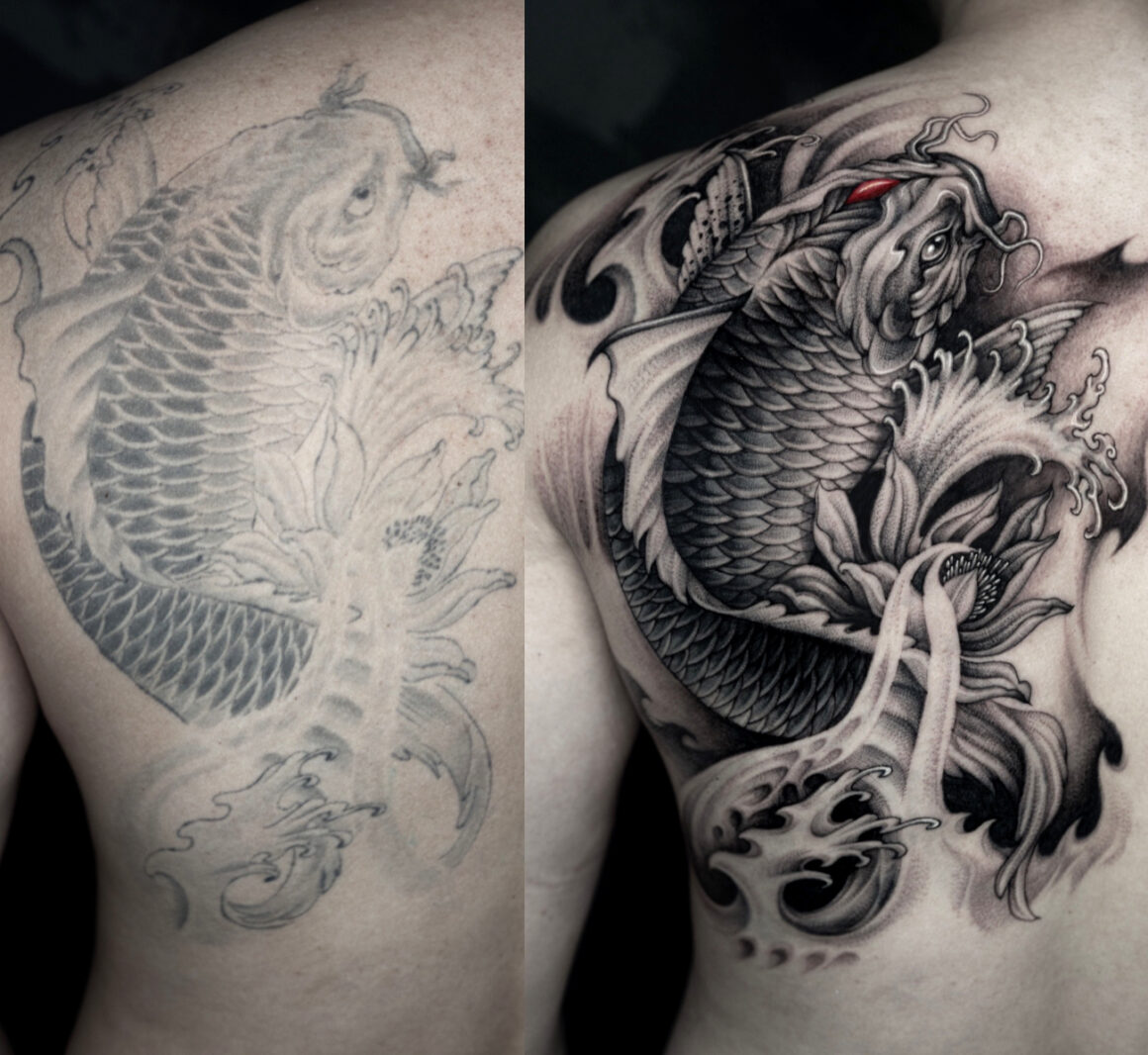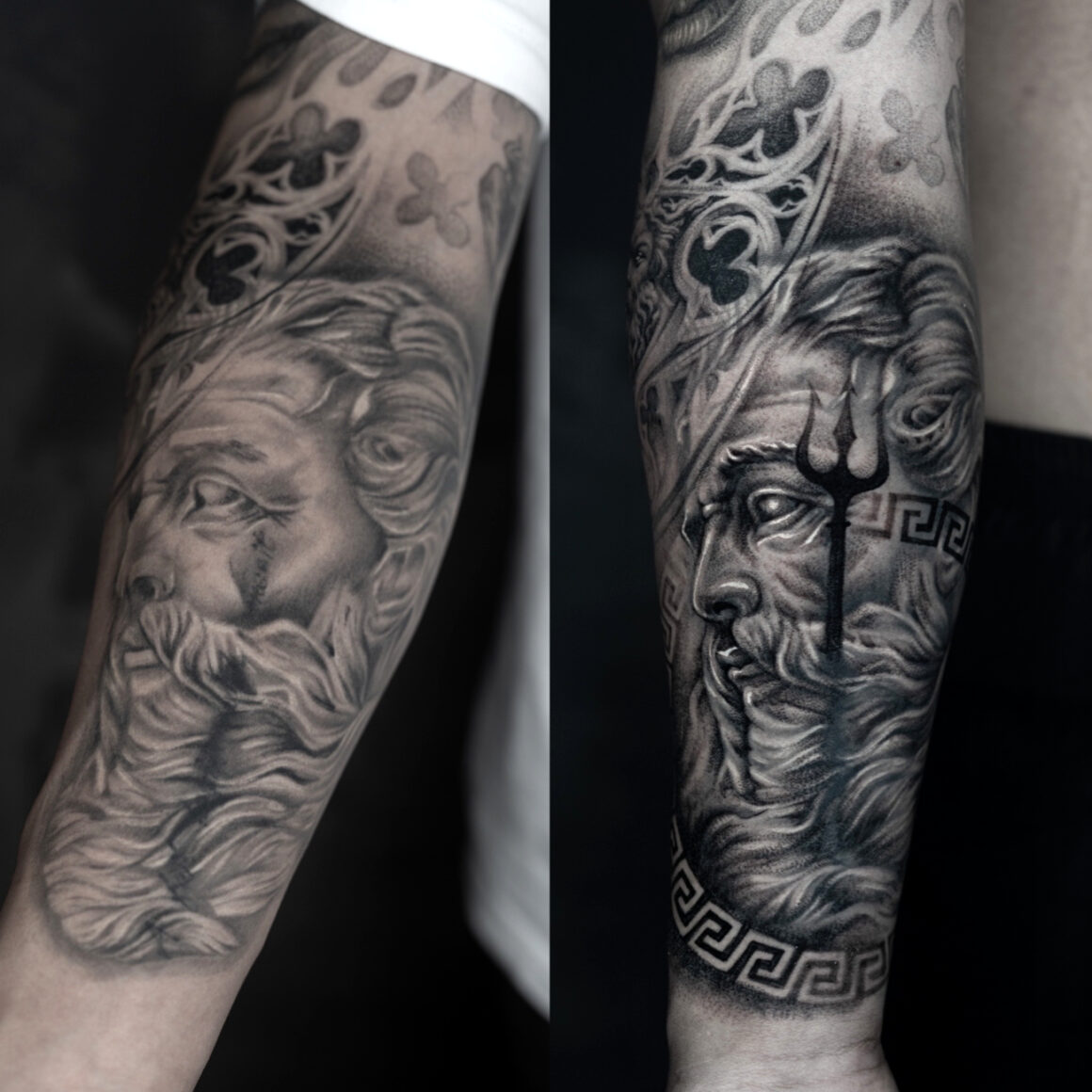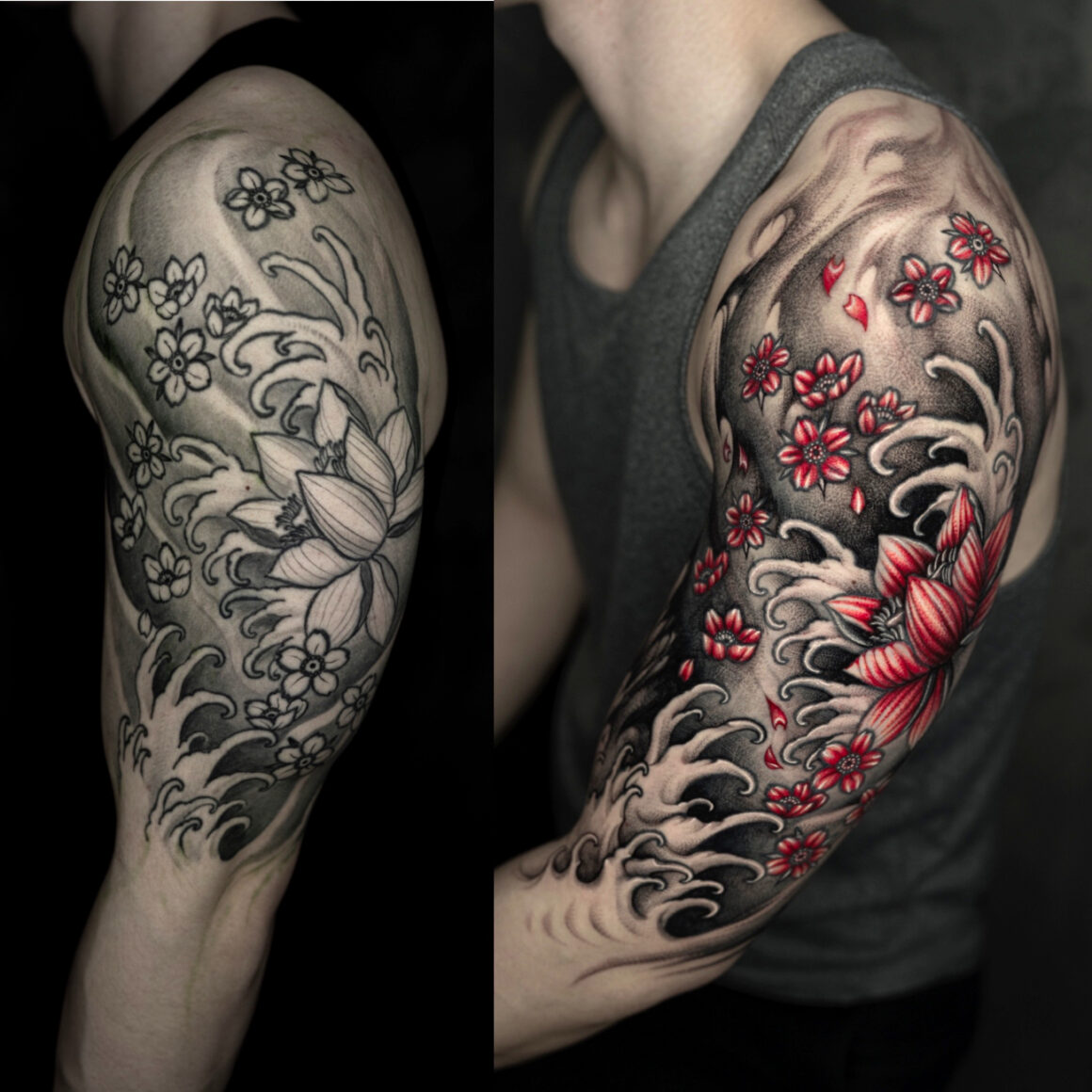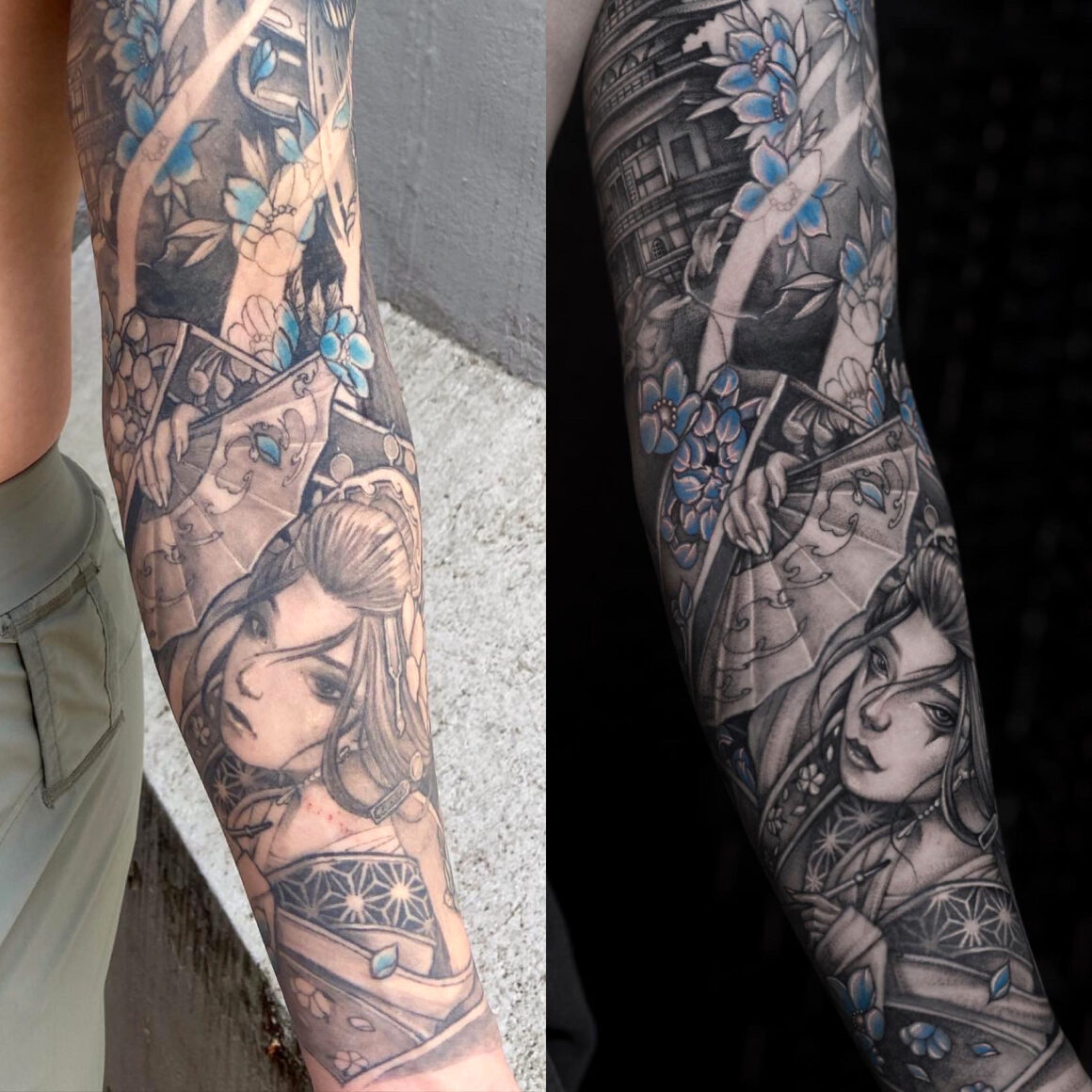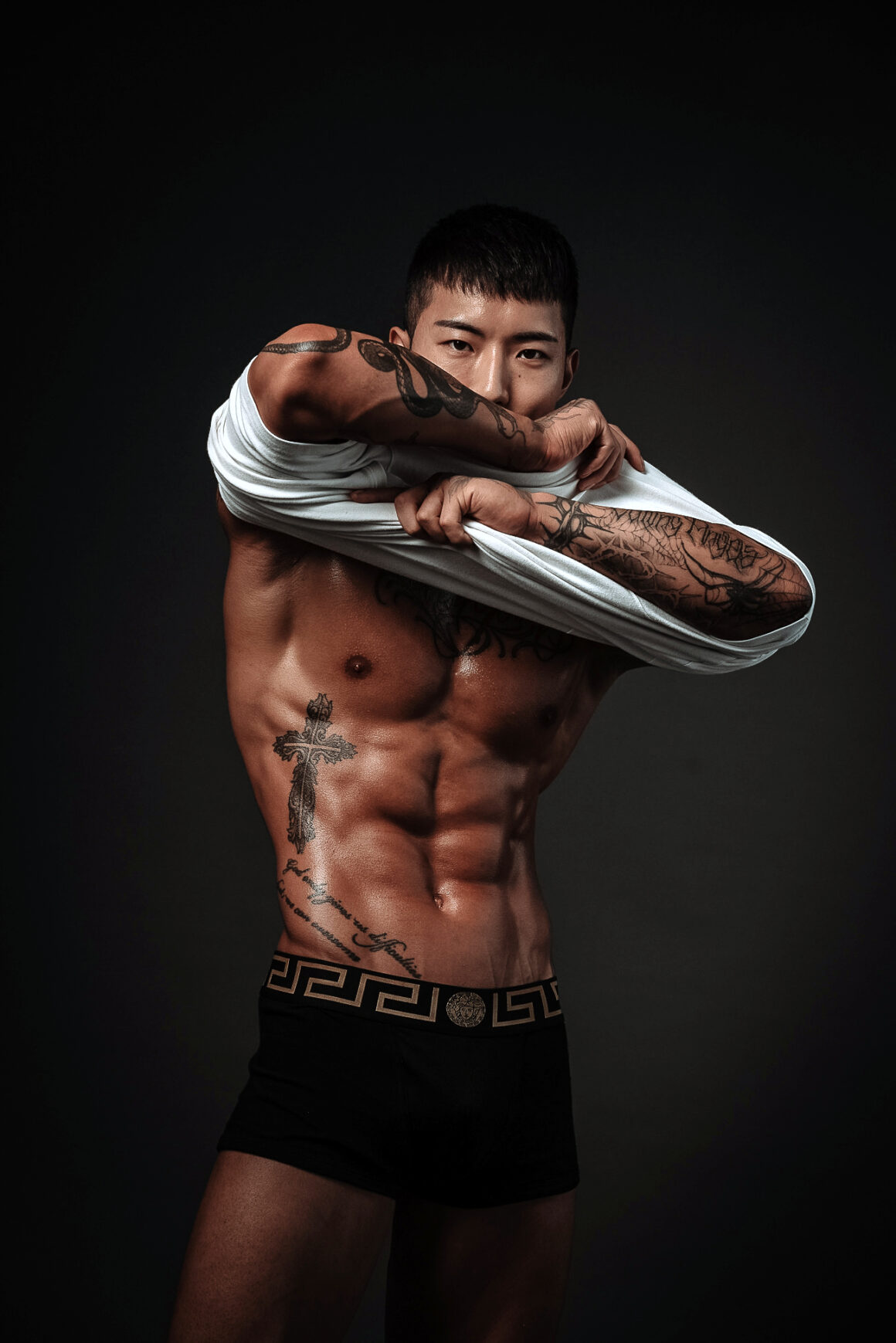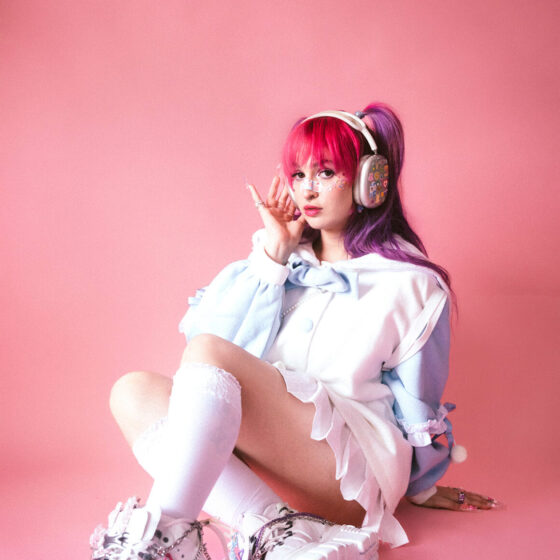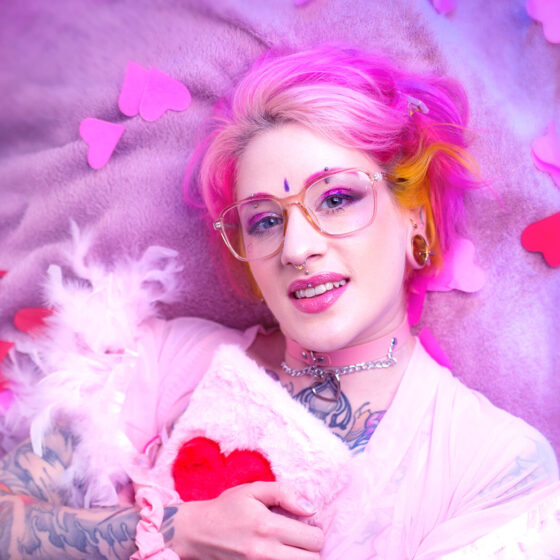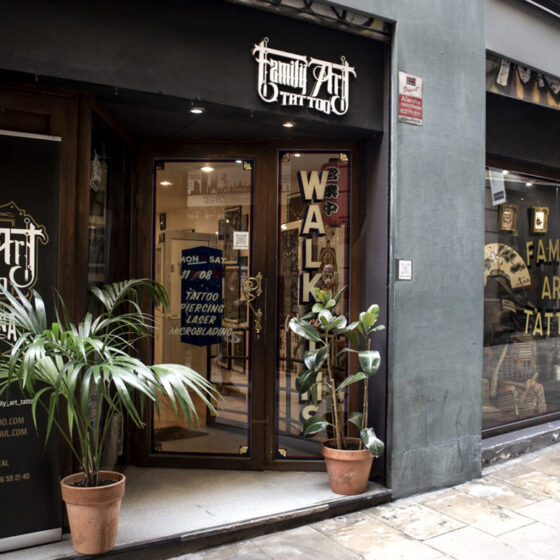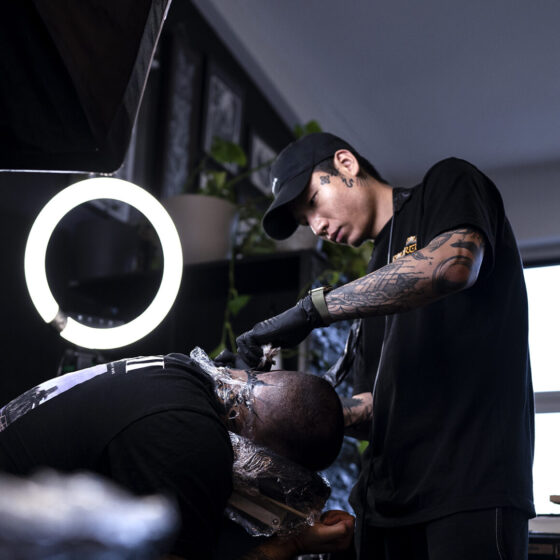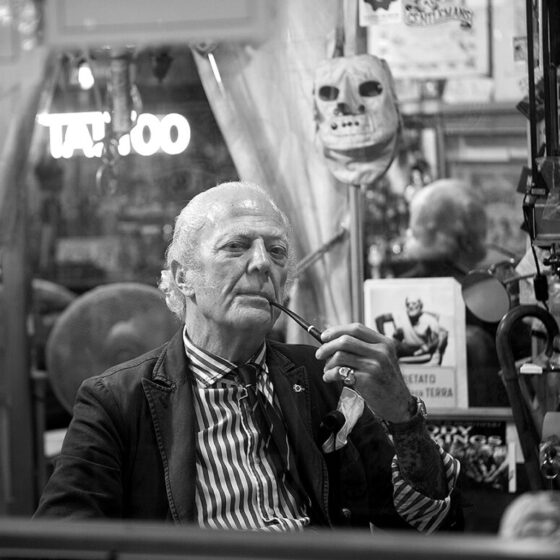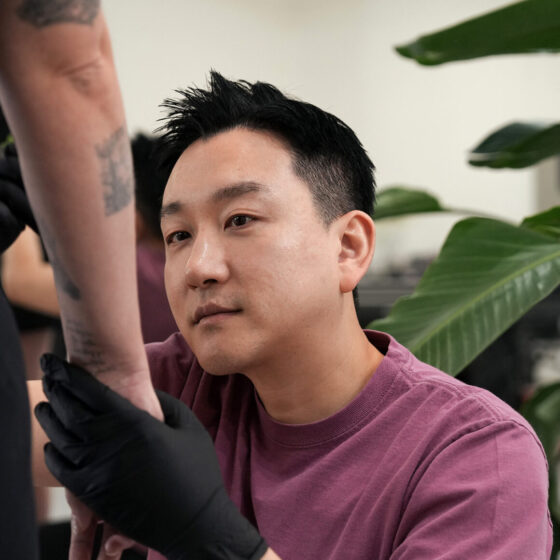For him, tattoos are more than just art, they’re a way to connect with people and create something meaningful together. Black and grey and black and red are the technical aspects that distinguish his work, while the subject matter that he feels most his own is the one where he can express dark concepts, those often expressed by the theme of blood tears, without too strong accents.
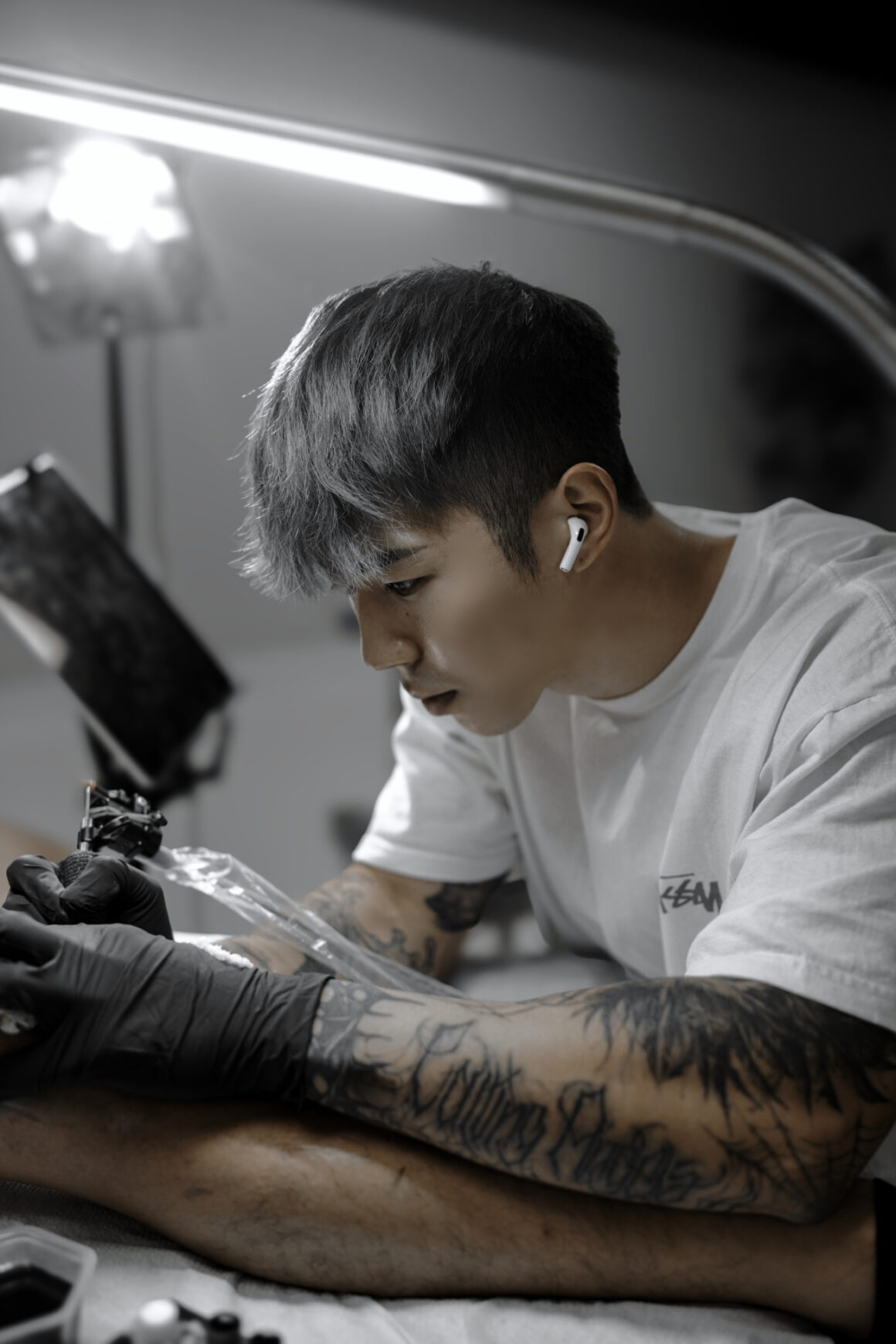
Above all, Park, a South Korean-born tattoo artist now based in Los Angeles, specializes in cover-ups, which he sees as a unique and challenging aspect of tattooing, as he told us in this interview.
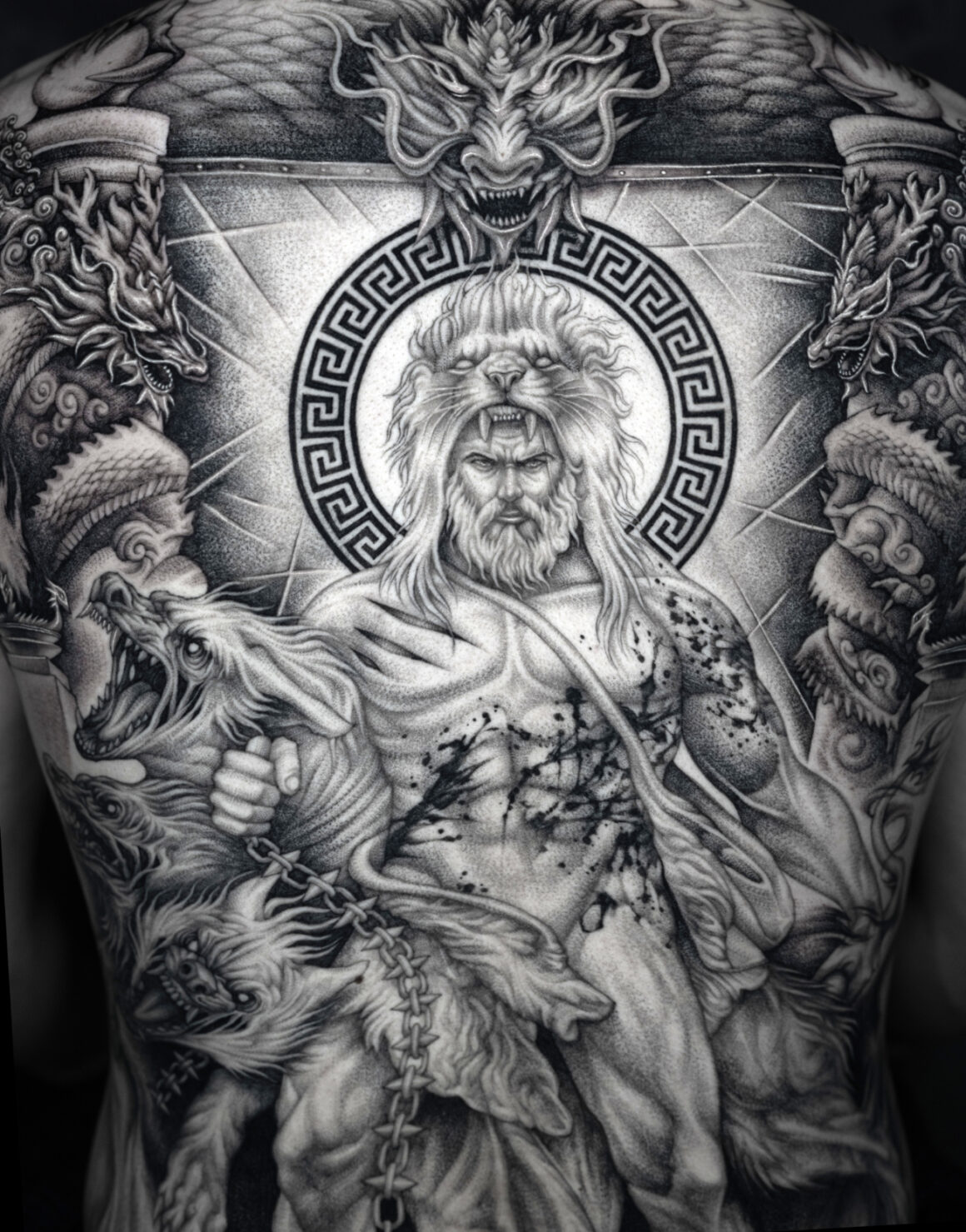
Hello Park where are you from and where do you work?
Hello, I’m Park, a tattoo artist specializing in black and grey, black and red, as well as cover-up and touch-up work. I was born and raised in South Korea and have gained guest work experience in various countries such as the UK, France, Germany, Italy, Australia. Currently, I’m based in LA, USA, and actively practicing my craft here.
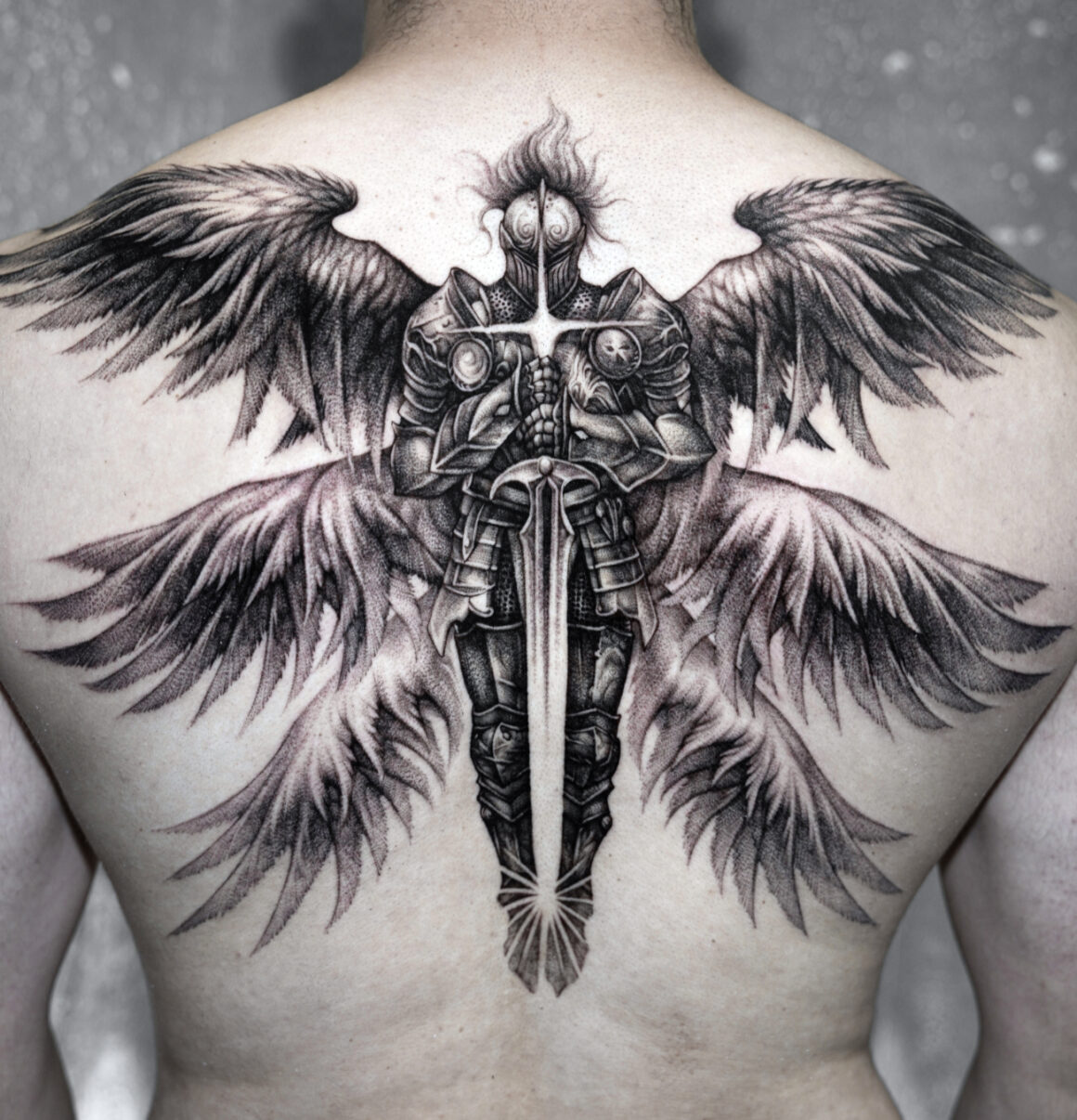
What inspired you to pursue a career as a tattoo artist? Did you start early?
I began learning tattooing in 2017 and now have 8 years of experience in the field. Since childhood, I’ve always enjoyed drawing, and luckily, I remember being particularly talented in it. For instance, during middle school, my art teacher even instructed me to teach drawing techniques to my classmates.
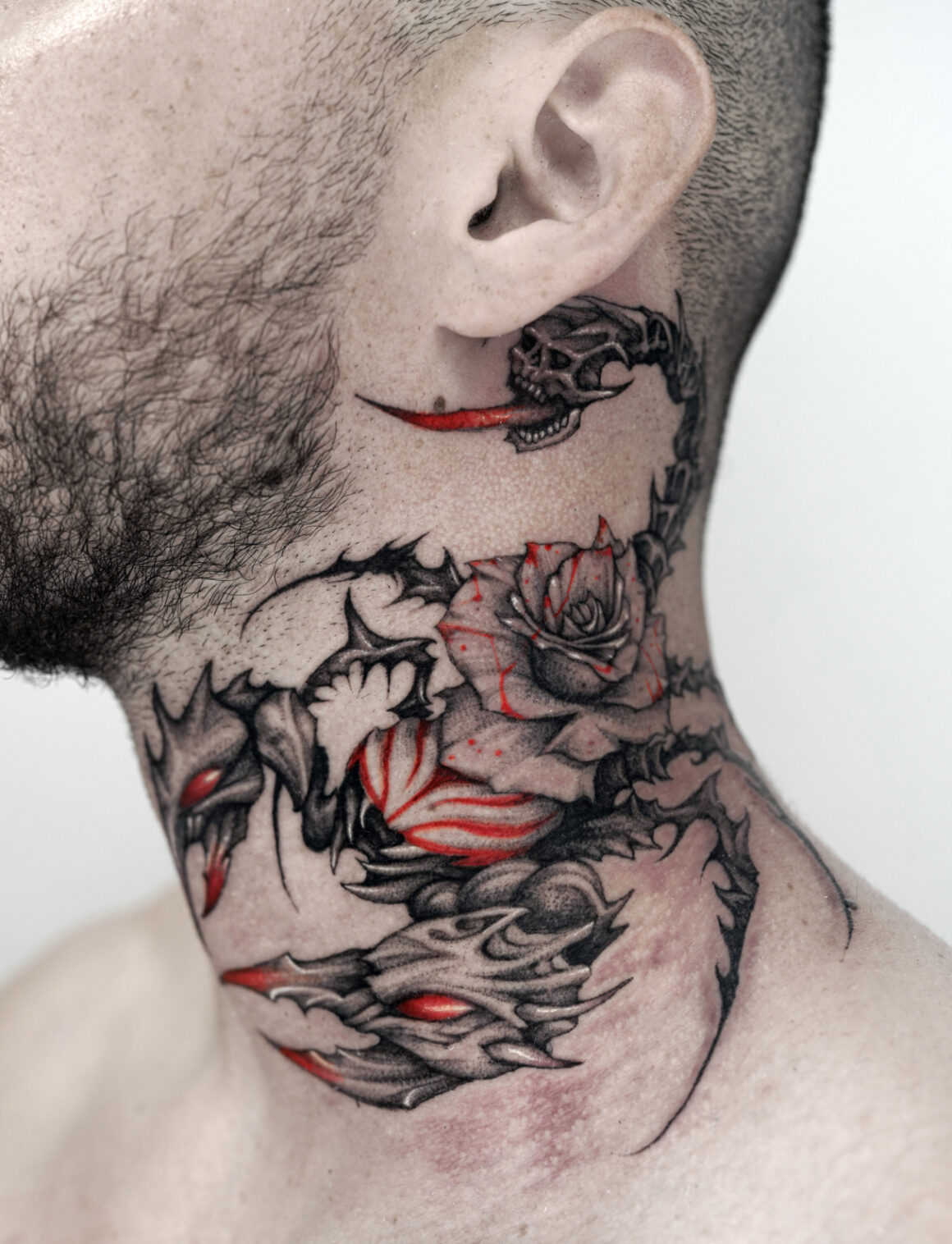
Subsequently, I pursued a path in design arts high school, where I continued to hone my drawing skills. However, during college, I took a slightly different route and studied beauty coordination.
Yet, I couldn’t shake off my passion and love for art, eventually finding my way back to it as a tattoo artist.
I take great pride in being able to practice an art form that leaves a lasting impression on people worldwide. As a tattoo artist, I continue to embrace this activity, seeing it as an opportunity to etch lifelong art onto people’s bodies.
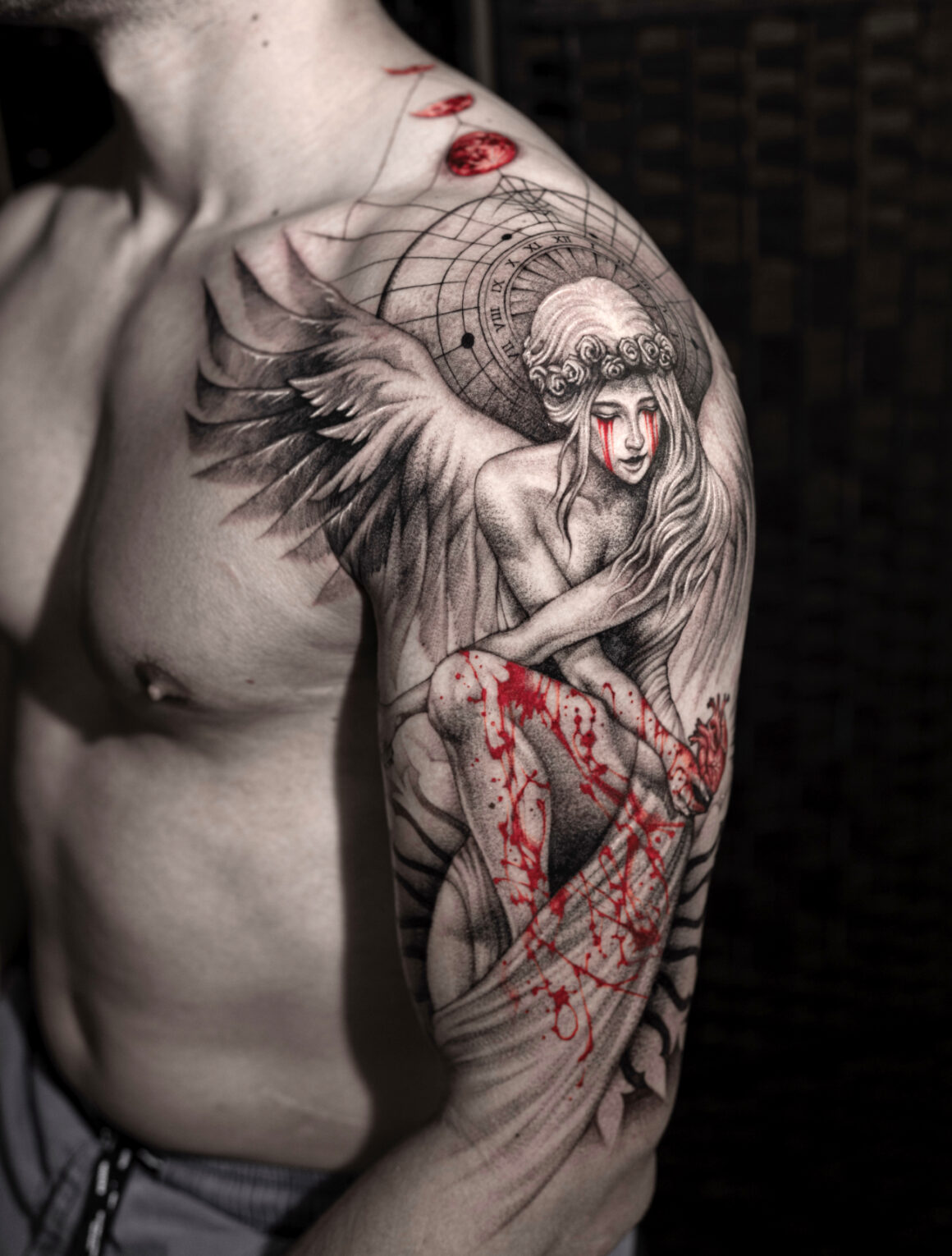
Black and grey as a reference style. Why this choice what do you like about creating works in this style and what about the aesthetics?
I chose to work with a black and grey style because of its versatility and the way it allows for intricate shading and depth. As I got deeper into tattooing, I found myself drawn not only to black and grey but also to cover-ups and different geometric styles. Instead of following strict artistic boundaries, I prefer to create tattoos that blend different influences and reflect the personality of each client. For me, tattoos are more than just art—they’re a way to connect with people and create something meaningful together.
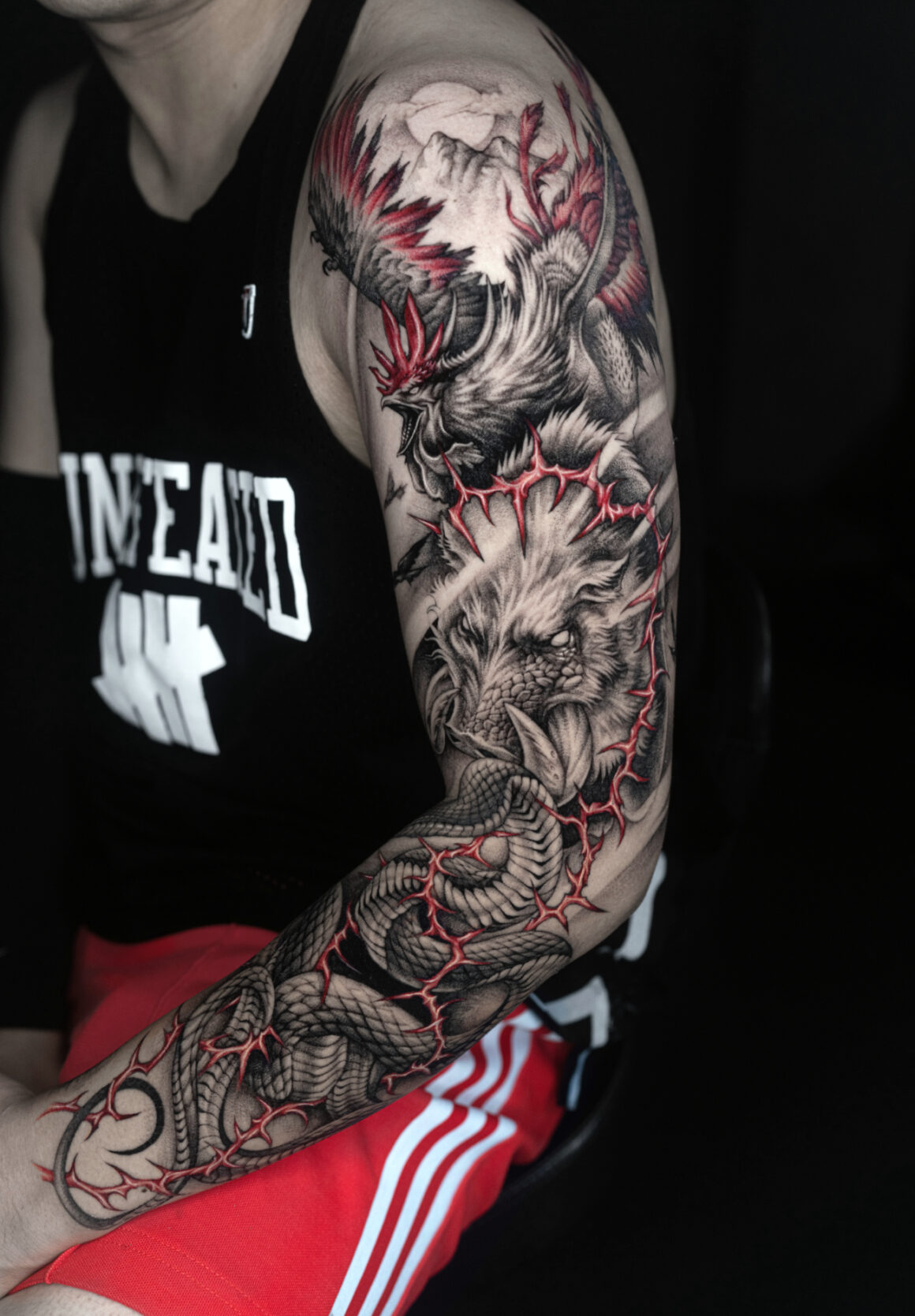
But the most important aspect in your work are the cover-ups. Why did you focus on them?
The reason why I’ve centered my focus on cover-up tattoos is because I see them as a unique and challenging aspect of tattooing. Cover-up tattoos involve working over an existing tattoo that the client no longer likes or wants to change, which adds an extra layer of complexity to the process. When you’re doing a cover-up, it’s like painting over someone else’s canvas—you’re tasked with adding new artistic value to something that already exists. It’s like repainting over a painting done by someone else, which requires a deep understanding of both artistry and technical skill.
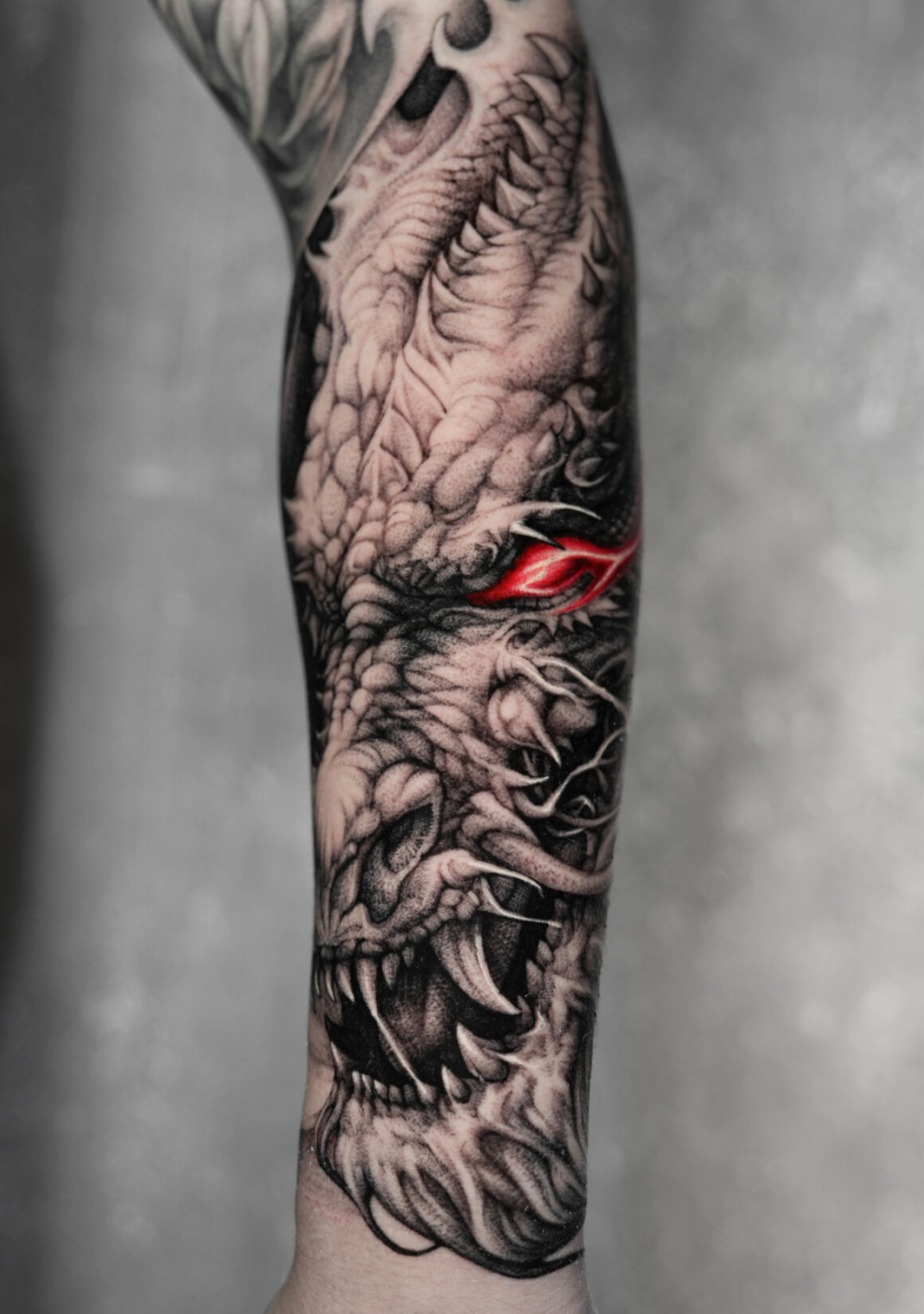
Moreover, clients seeking cover-ups are often feeling stressed and anxious because they’re unhappy with their existing tattoos. This adds another layer of pressure for the artist, as they must meet the client’s expectations and deliver exceptional work. Many artists shy away from cover-ups because they prefer to work on their own original designs, but for me, it’s a welcomed challenge.
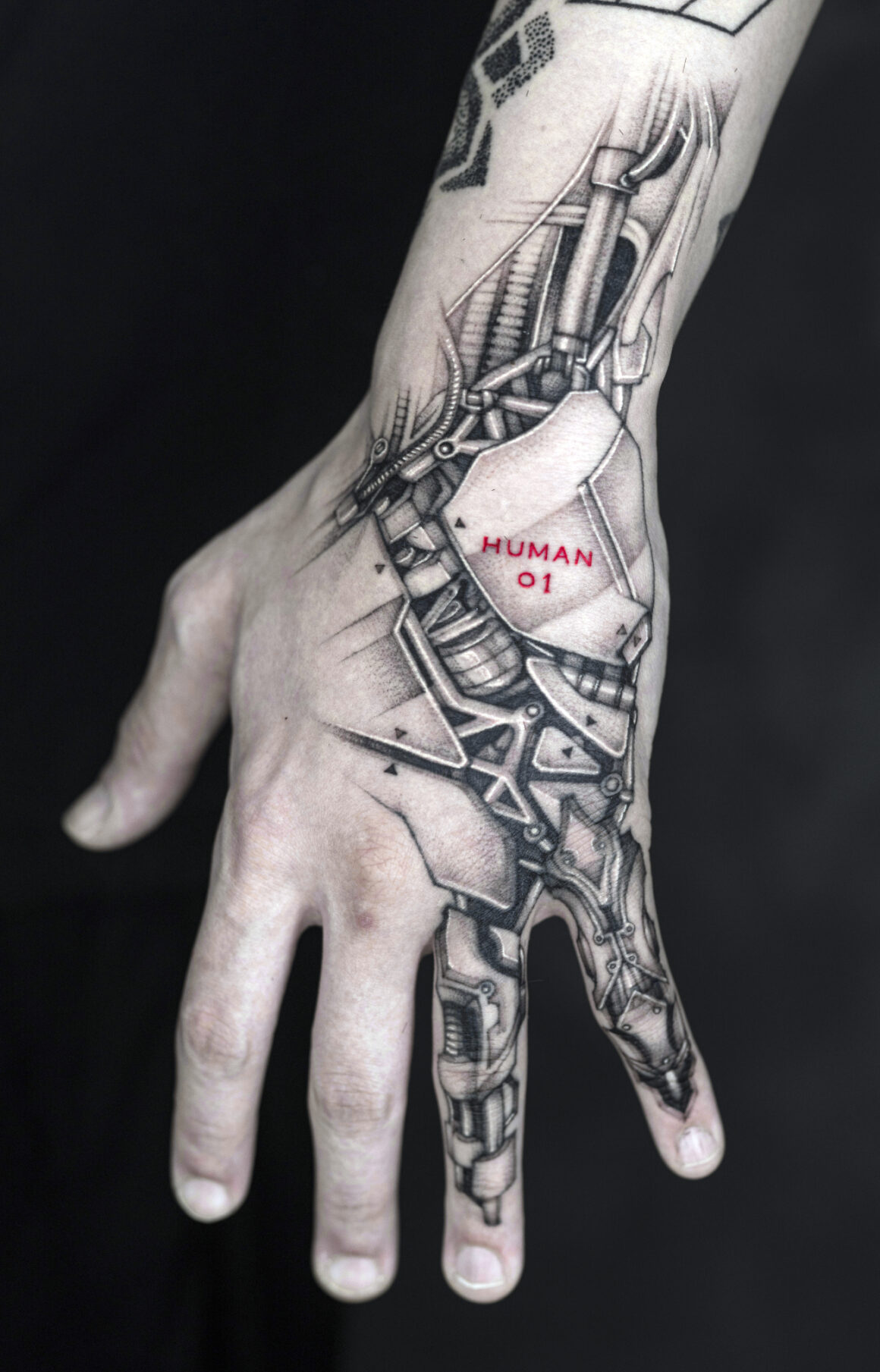
I find great satisfaction in being able to solve the problems of clients who are struggling with their existing tattoos through cover-up work. It’s not just about covering up a mistake; it’s about transforming something negative into something beautiful and meaningful.
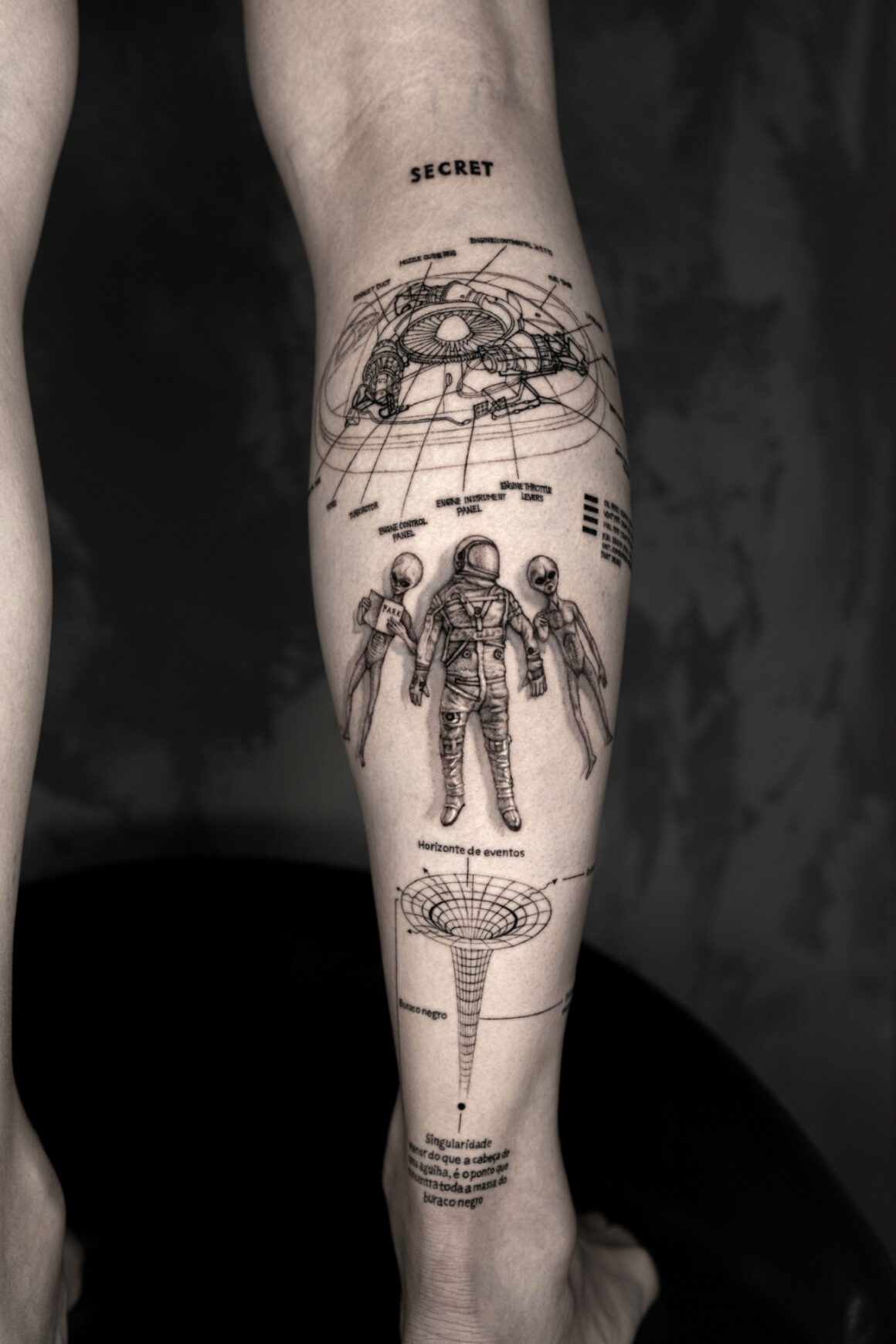
How do you proceed with a client who asks you for a cover-up? Do you suggest the work you will do to cover up the old tattoo?
As a tattoo artist, I believe I don’t have the authority to judge the value of existing tattoos that individuals may already have, regardless of their style. After all, even though a tattoo may be old, it could hold significant meaning for the person who wears it. That’s why I only proceed with cover-up tattoo work upon the request of my clients.
Despite the complexities involved, I find immense satisfaction in assisting clients in transforming their tattoos into something they can truly cherish.
The central and crucial focus of my cover-up tattoo work lies in how seamlessly I can conceal the existing tattoo.
Considering this, I contemplate designs that can naturally cover the previous tattoo, aligning with the body’s contours and muscle lines. I consider various elements such as design, placement, and angles to ensure a harmonious result. By considering these factors, I aim to execute the cover-up tattoo in a way that blends seamlessly with the body’s natural features.
Are there any subjects or themes that you prefer and feel more yours?
My favorite artwork that I believe shows my style most is the “crying angel” piece. It originated from a customer’s idea and embodied a fusion with my creativity. When I first started tattooing, I predominantly worked in the black and grey genre. However, over time, as my style evolved, I began incorporating red accents into my work. This piece best represents my evolving style.
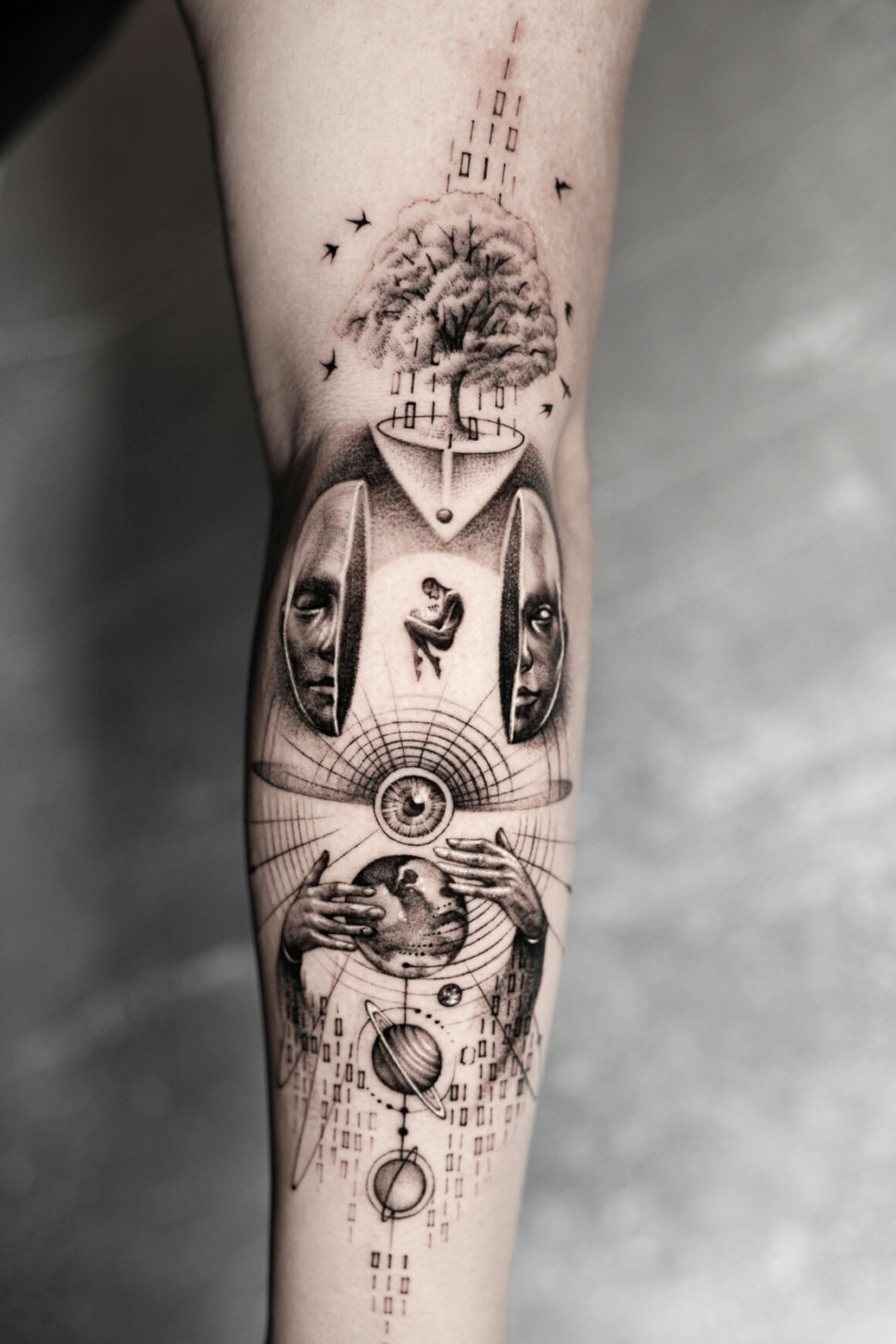
Though blood itself may not be a subject many tattoo artists typically use, I believe this artwork tastefully and elegantly portrays the theme of “blood tears” without veering into overly dark or macabre territory. It’s been highly popular worldwide, with many requests solely for the design. Additionally, it stands as one of my best pieces, with consistent requests from clients who desire similar work.
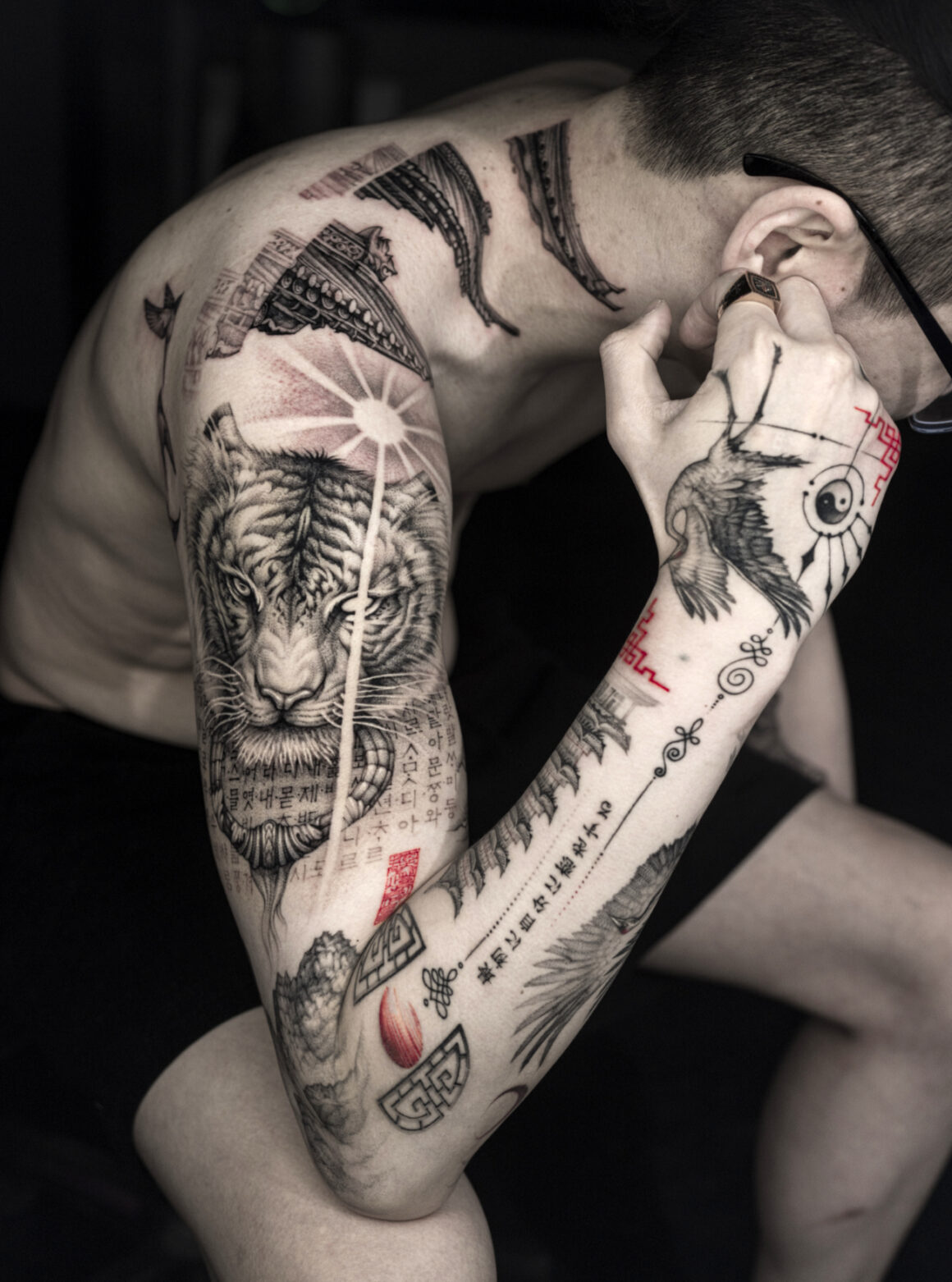
You have travelled a lot for your work, where and what were the most important experiences for your professional growth?
Before the outbreak of COVID-19, I had the opportunity to work briefly in Sydney, Australia. It was an experience I vividly remember, as the tattoo shop where I worked was right by the beach, attracting a lot of walk-in clients.
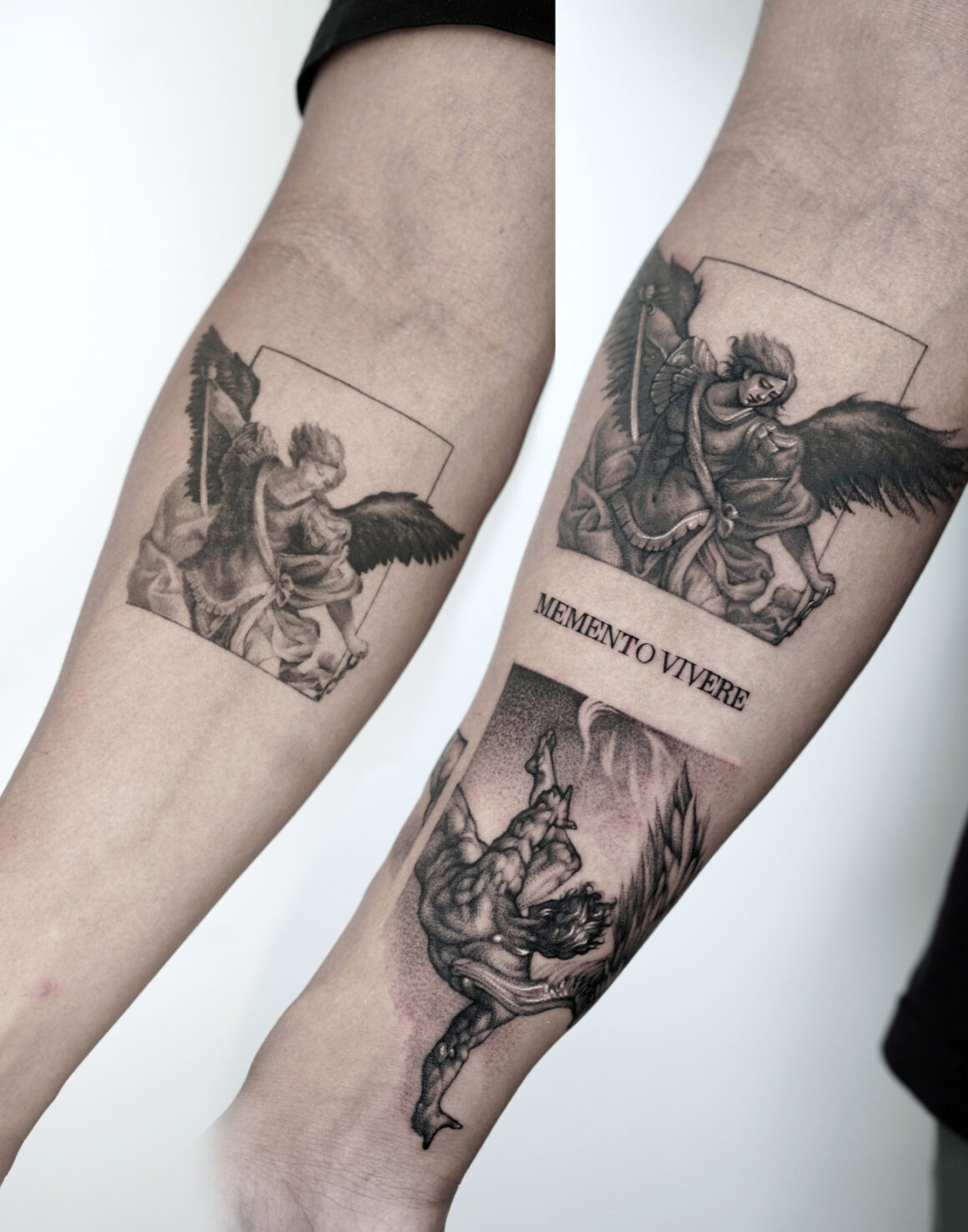
Being my first real oversea work experience outside of Korea, the memories remain fresh even now. Back then, with the high volume of walk-in clients, there was little need for appointments.
I would meet customers face-to-face, discuss ideas and designs on the spot, and dive straight into the tattooing process.
While many tattoo artists, including myself, now tend to operate on a reservation basis, the shop atmosphere at that time was so bustling with walk-in clients that appointments seemed unnecessary. Through direct interaction and communication with clients, brainstorming ideas, and finding common ground, I learned a great deal and continued to grow as an artist. I believe that experience laid the groundwork for me to confidently pursue further international work experiences thereafter.
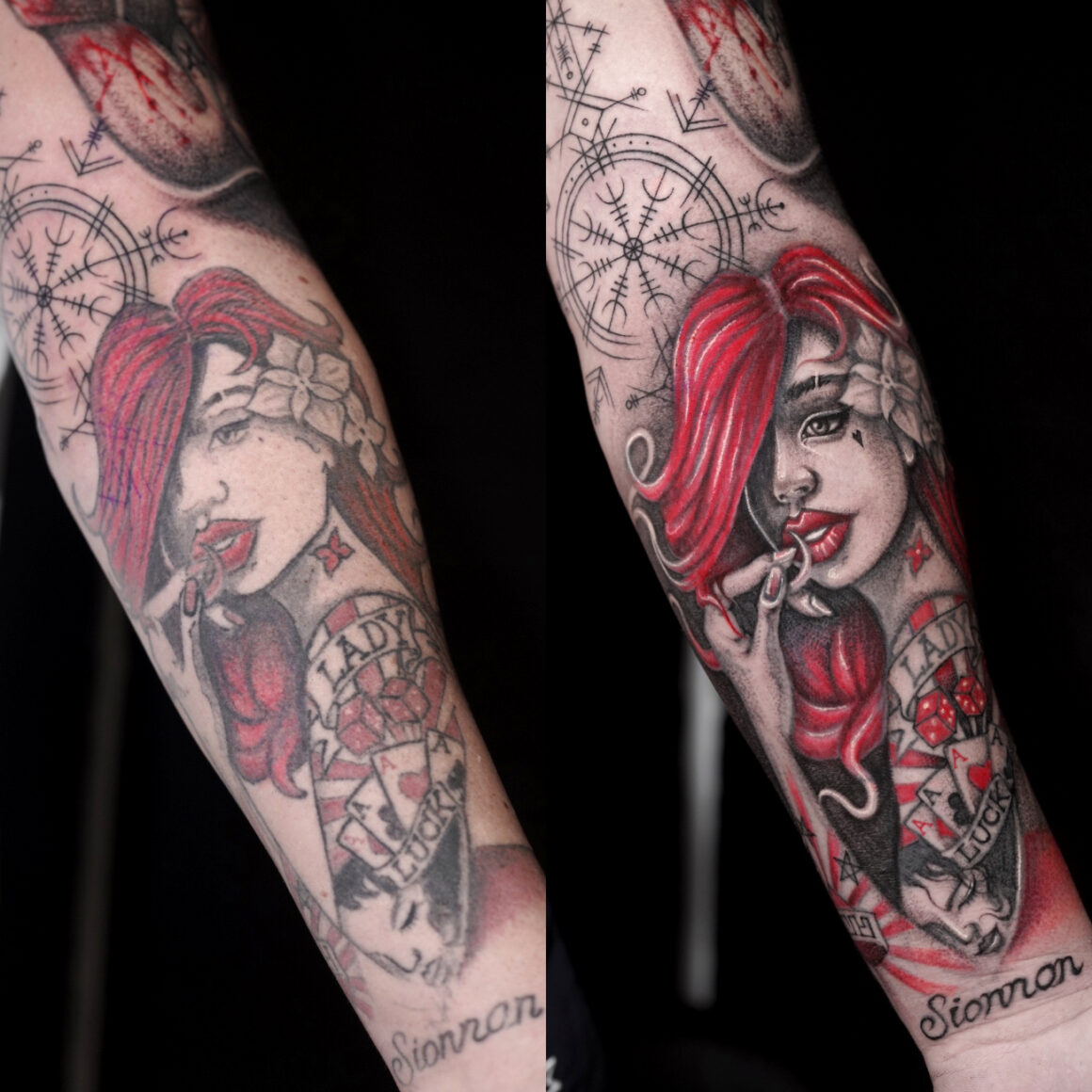
Where do you see yourself in your future and what are your ambitions?
The greatest fear I harbor is the potential loss of passion for drawing, especially for tattoos. Currently, I find immense satisfaction in my work and genuinely love creating tattoos. Regardless of any future challenges, there’s no fear greater than the thought of losing my enthusiasm for drawing and tattoos.
My aspiration is to continue my journey as a tattoo artist with the same fervor and passion for art and tattoos as I have now.
This commitment to myself is not about achieving something grandiose but rather about maintaining the same level of interest and dedication to art and tattoos that I possess at this moment.
